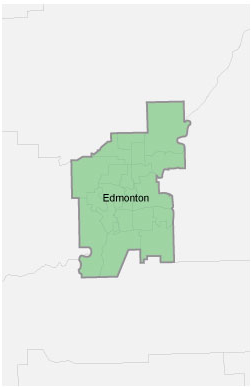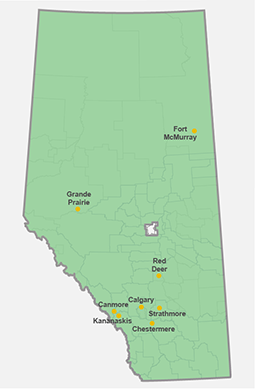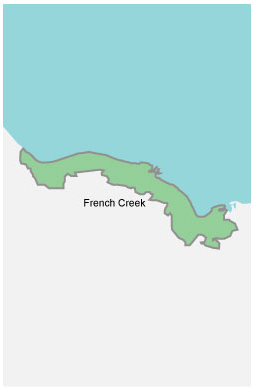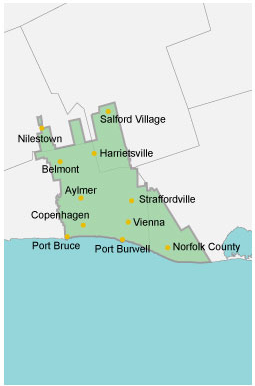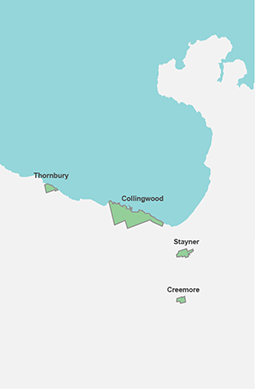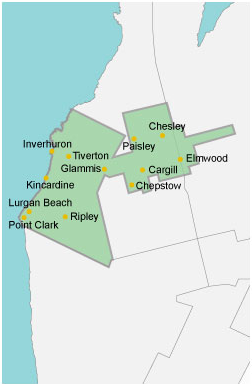Inspections for residential customers
EPCOR inspects the wastewater collection system with dye testing that tracks the flow of wastewater from your property to the sanitary or stormwater system. The dye helps us verify that your sanitary system is entering the correct sewer system and that the infrastructure is in good condition and connected properly in order to prevent flooding and odour issues.
- An EPCOR employee will enter your property and will flush a coloured, non-toxic and biodegradable, dye down your toilet or other plumbing fixture. This test will not damage the toilet or plumbing and should only take a few minutes.
- The EPCOR employee will then check the both the sanitary and storm manholes on the street to determine which sewer system the dye entered.
- This test helps EPCOR determine if untreated wastewater is entering the storm sewer system (i.e. cross connection).
- Depending on the result of the dye test, repairs or modifications to the private sewer system may need to be completed, which could result in costs to the property owner.
Received a letter to book a dye test?
Schedule a dye test inspection by emailing the contact on the letter you received.
Inspections for industrial, commercial and institutional customers (ICI)
EPCOR enforces the Bylaws by monitoring and inspecting over 2,000 industrial, commercial and institutional (ICI) sector facilities each year and responding to spills and complaints. The Bylaws give EPCOR the right to conduct a drainage inspection of any ICI sector facility in Edmonton with reasonable notice and at any reasonable time. All EPCOR employees carry photo identification and are in an EPCOR branded uniform.
What EPCOR looks for
Inspections allow EPCOR to ensure no prohibited, restricted or hazardous wastes (which may have adverse affects to human health, the environment or wastewater collection infrastructure) are being released into the sewerage system. Inspections also give us the opportunity to raise awareness and provide information regarding the safe disposal of wastewater and storm water.
During an inspection, an EPCOR employee will look at any place where wastewater, including outdoor runoff, drains into the sanitary or storm water sewer systems, a ditch or watercourse. This review includes looking at all drainage features on-site including floor and roof drains, sumps, washrooms, grease traps, interceptors, processes, chemicals and chemical storage areas and outdoor features such as catch basins.
To help in the inspection, we may request a copy of the building plan, disposal records and Safety Data Sheets (SDS).
Key wastewater restrictions
A key restriction for the storm sewer system is that no wastewater other than rainwater and snow melt should enter the system.
The Bylaws outline all the restrictions regarding release of wastewater, including storm water. Key restrictions to the drainage system include, but are not limited to:
- No hazardous material including paint, solvents, oil, flammables, heavy metals, chemicals or other materials harmful to the environment;
- No sawdust, glue, grease, glass, paper, straw, cement mix, sand (sanitary only), cloth, sharp objects or other materials that may damage or plug drainage pipes or equipment; and
- No material that is corrosive or radioactive.
All waste that cannot be discharged in the sewer systems should be collected and removed to an appropriate waste disposal site. In some cases, you may have to install interceptors or other pre-treatment equipment on-site to remove prohibited or restricted substances from wastewater before it is released.
Waste disposal contractors can be found by searching “Environmental Products and Services” or “Waste Disposal or Recycling” through your preferred search engine.
Note: Violations of these Bylaws are subject to fines of up to $7,500, payment of any needed repairs, or discontinuance of water or drainage services.
Handling waste responsibly can play an important role in preventing contaminants from entering the sewerage systems. Understanding and abiding by bylaw restrictions will help protect the environment and reduce sewerage systems maintenance repair and operation costs.
Equipment ICI customers may be required to install and/or maintain:
